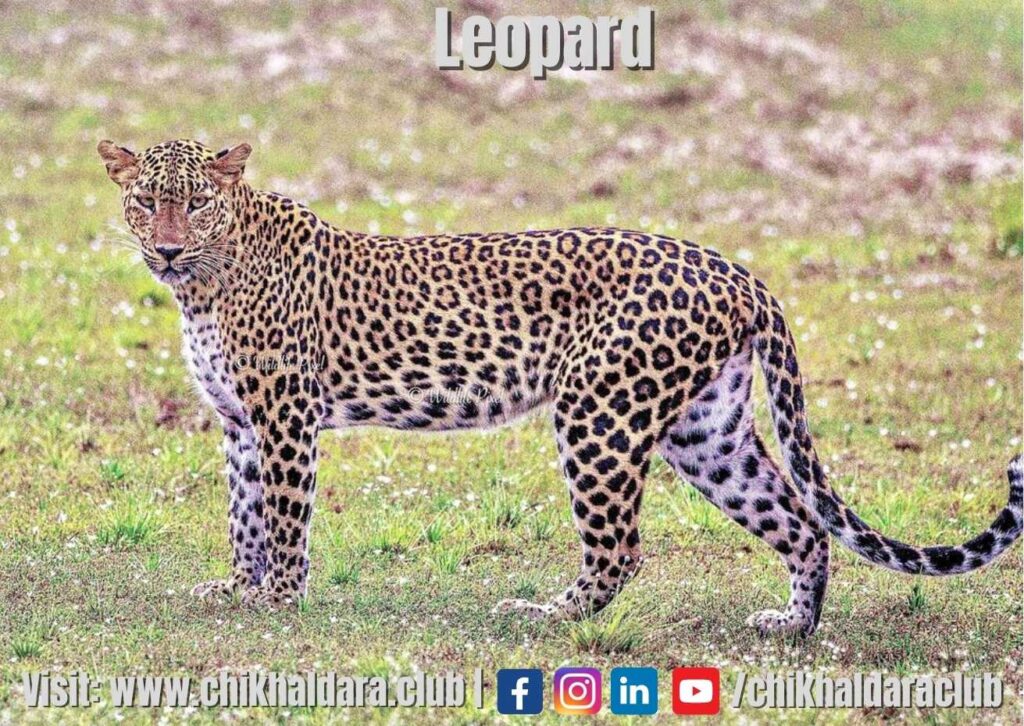Table of Contents
Leopards, scientifically known as Panthera pardus, are one of the most beautiful and powerful big cats in the world. These majestic animals have a yellow or tawny coat with black spots and are known for their agility and strength. While they are found in many parts of the world, including Africa, Asia, and Europe, leopards in India are particularly significant due to their cultural and ecological importance.
In India, leopards are found in various habitats, including forests, grasslands, and even urban areas. According to a report by the Wildlife Trust of India, the estimated population of leopards in India is around 12,000 to 14,000 individuals. However, this number is only an estimate, and the actual population may be lower due to habitat loss, poaching, and other threats.
Habitat Loss and Fragmentation
One of the main threats to leopards in India is habitat loss and fragmentation. As human populations increase, the demand for land and resources also increases, leading to deforestation, mining, and other activities that destroy natural habitats. This forces leopards to move to new areas, often resulting in conflicts with humans. When their habitats are fragmented, leopards are also more vulnerable to inbreeding, which can lead to genetic abnormalities and reduced fitness.
Leopard Lifespan
The lifespan of a leopard can vary depending on various factors, including habitat, food availability, and threats from predators and humans. In the wild, leopards typically have a lifespan of 12-15 years. However, in captivity, they can live up to 20 years or more.
Several factors affect the lifespan of leopards in the wild, including competition for resources and predation. Leopards face competition for food and water with other animals in their habitat, and they must also avoid predators such as lions and hyenas. In addition, habitat loss and fragmentation, as well as human activities such as poaching and hunting, can also reduce the lifespan of leopards.
Female leopards tend to live longer than males, as they are not as aggressive and do not face the same threats from territorial disputes. The lifespan of a leopard can also be influenced by the availability of prey, as they require a consistent supply of food to survive.

Leopard Size and Weight
Leopards are one of the largest and most powerful big cats, with a muscular build and impressive strength. The size and weight of leopards can vary depending on several factors, including sex, habitat, and diet.
Adult male leopards are generally larger than females and can weigh between 60 to 90 kg (132 to 198 lbs) on average, while females weigh around 30 to 60 kg (66 to 132 lbs). However, leopards living in areas with a lot of prey, such as in dense forests or near water sources, can be much larger. The largest recorded leopard weighed over 100 kg (220 lbs) and was almost 3 meters (10 feet) long from head to tail.
Leopards have a distinctive muscular build with powerful legs, a broad head, and a strong jaw. They have a long tail, which they use for balance when climbing trees and for communication with other leopards. Leopards have a spotted coat that helps them blend into their surroundings, and their fur varies in color from pale yellow to dark golden brown, depending on the region where they live.
Leopard Speed
Leopards are known for their impressive speed and agility. They are one of the fastest big cats and can reach speeds of up to 60 km/h (37 mph) in short bursts, making them incredibly effective hunters.
Leopards are adapted to sprint over short distances to chase down prey, and they can accelerate rapidly to catch their target. They use their powerful legs to propel themselves forward and their flexible spine to maintain balance while running.
Leopards also have excellent vision and hearing, which they use to detect prey and navigate their environment. They are stealthy hunters and can stalk their prey quietly and patiently before launching a surprise attack.
Despite their speed, leopards are also known for their agility and are skilled climbers. They can climb trees and cliffs with ease, using their strong legs and retractable claws to grip onto surfaces. This ability to climb is also helpful for escaping threats and finding a safe place to rest.
Poaching and Wildlife Trade
Another significant threat to leopards in India is poaching and the illegal wildlife trade. Leopards are hunted for their skin, bones, and other body parts, which are highly valued in traditional medicine and for fashion accessories. In some parts of India, leopards are also hunted for their meat. This illegal trade is not only a threat to the survival of leopards but also undermines the efforts of conservationists and law enforcement agencies.
Human-Leopard Conflicts
Leopards are known to enter human settlements in search of food or water, especially in areas where their natural habitats have been destroyed or fragmented. This often leads to conflicts between humans and leopards, which can result in injury or death to both humans and leopards. In some cases, leopards are killed in retaliation for attacking livestock or humans. This exacerbates the problem of habitat loss and fragmentation, as well as the decline in the leopard population.

Conservation Efforts
Conservation efforts to protect leopards in India are ongoing, and several organizations are working to ensure the survival of this iconic species. The Indian government has implemented laws and policies to protect leopards, and several national parks and wildlife sanctuaries have been established to provide a safe habitat for leopards and other wildlife.
In addition, community-based conservation programs have been initiated to involve local people in the conservation of leopards. These programs aim to reduce human-leopard conflicts by providing education and awareness about the importance of conservation, as well as implementing measures to prevent attacks on livestock and humans.
Leopards in Melghat Tiger Reserve
Melghat Tiger Reserve is located in the Amravati district of Maharashtra, India, and is known for its rich biodiversity and unique landscape. The reserve is home to several rare and endangered species, including tigers, leopards, Indian bison, and sloth bears.
Leopards are one of the most prominent predators in Melghat Tiger Reserve and are found in significant numbers throughout the region. The reserve provides an ideal habitat for leopards, with dense forests, rocky terrain, and plenty of water sources. The leopard population in the reserve is estimated to be around 70-80 individuals, making it one of the largest populations in the region.
Leopards in Melghat Tiger Reserve are known for their unique behaviors and adaptations. Due to the rugged terrain, leopards in the reserve are known to be expert climbers and are often spotted resting on tree branches. They are also known for their ability to adapt to changing environments and can survive in both dense forests and open grasslands.
The leopard population in Melghat Tiger Reserve is also an important indicator of the overall health of the ecosystem. As top predators, leopards play a crucial role in regulating the population of prey species and maintaining the delicate balance of the ecosystem.
Despite the importance of leopards in the region, they are also threatened by various human activities, including poaching, habitat loss, and human-wildlife conflict. The reserve has implemented several conservation measures to protect the leopard population, including habitat restoration, community education programs, and the deployment of anti-poaching teams.

How can I see leopards in India ?
To see a leopard in India, you can visit one of the national parks or wildlife reserves like Melghat Tiger Reseve that have a high density population of leopards.
You need to book jungle safari and try to find the leopards during jungle safari.
The best season and time to see leopards during a jungle safari in India can vary depending on the location. In general, the best time to go on a jungle safari to see leopards is during the dry season, when vegetation is sparse, and animals gather around water sources.
Find More about;
Melghat Tiger Safari
Chikhaldara Jungle Safari
Semdoh Jungle Safari
It’s important to note that leopard sightings are not guaranteed, and the timing of the sightings can also depend on luck. However, visiting during the recommended time frame and going on safari with an experienced guide can increase your chances of seeing these elusive big cats.
Summary
Leopards are a beautiful and vital part of India’s natural heritage, and their conservation is essential for the health of the ecosystem. However, they face several threats, including habitat loss, poaching, and human-leopard conflicts. Conservation efforts must continue to ensure the survival of this species and their habitats. It is crucial to involve local communities, policymakers, and conservation organizations to work together to protect the future of these magnificent big cats.
Frequently Asked Questions | FAQs
Is cheetah and leopard same?
No, cheetahs and leopards are not the same. They are two different species of big cats with different physical characteristics and habitats. Cheetahs are known for their speed and distinctive spotted coat, while leopards are known for their strength and agility, and their coat has rosette-shaped spots.
Are leopards faster than cheetahs?
No, cheetahs are faster than leopards. Cheetahs are the fastest land animals and can reach speeds of up to 70 mph (112 km/h), while leopards can run at speeds of up to 37 mph (60 km/h). However, leopards are more agile and have greater strength than cheetahs, allowing them to climb trees and carry heavier prey.


